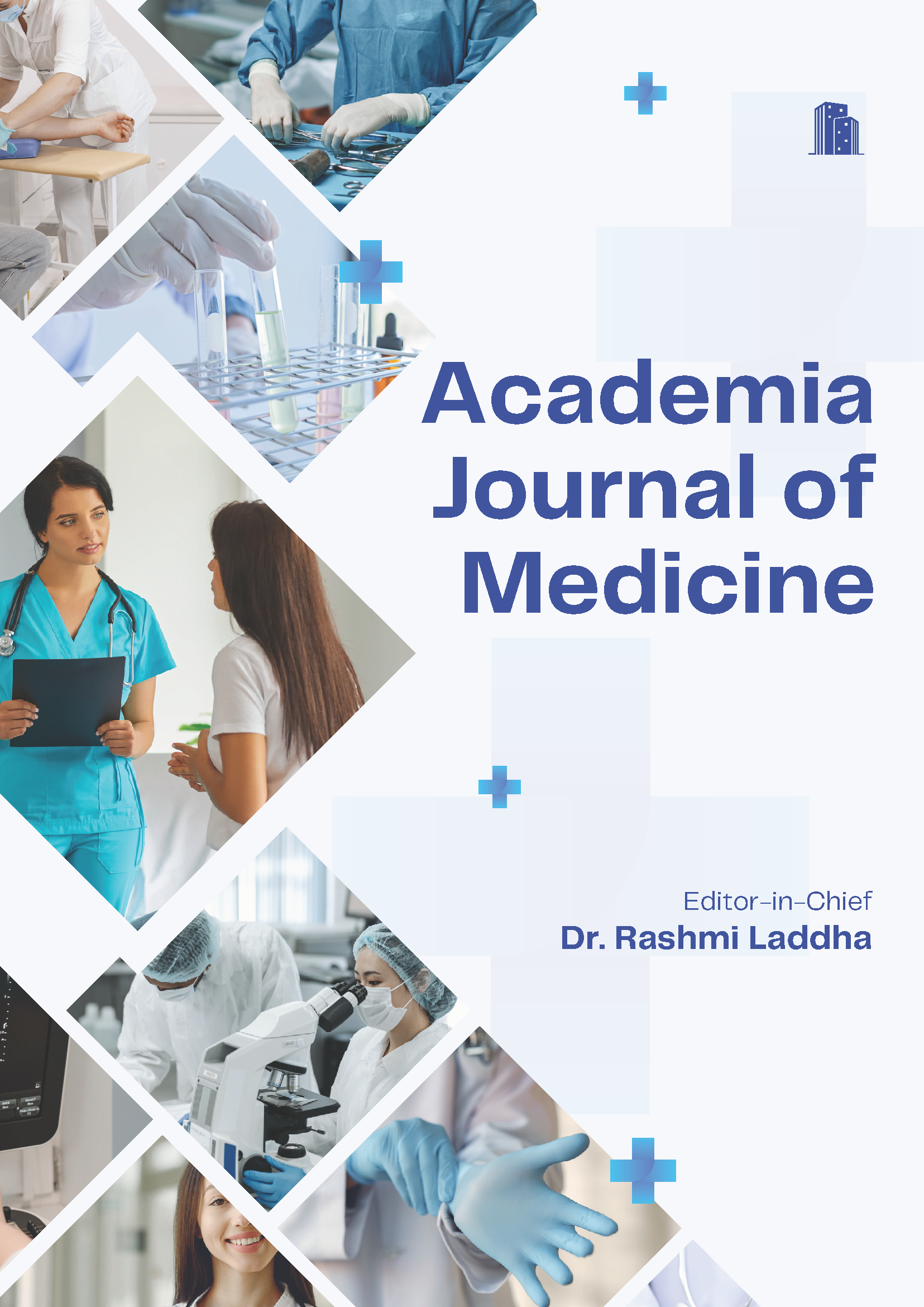Clinicoradiological Profile in Severe Acute Respiratory Illness Comparative Study in SARS COV-2 Positive and Negative Patients
Keywords:
SARS COV-2, COVID-19, Severe Acute Respiratory IllnessAbstract
Background: COVID-19 is a global pandemic which has infected more than 171 million individuals and has taken an immense toll on the world in terms of morbidity and mortality. The disease may progress in some patients from an influenza-like illness to severe acute respiratory illness. Diagnosis of COVID 19 is by RTPCR supported by radiological evidence. Subjects and Methods: In this prospective observational study, 80 patients-40 positive for COVID- 19 and 40 negative respectively were enrolled for the study from March 2020 to July 2020 in Bowring and Lady Curzon Hospital, Bangalore after obtaining clearance and approval from institutional ethics committee. We analysed the clinical profile, routine investigations and radiological profile in the study subjects. Results: Majority of the patients in positive and negative groups were males – 55% and 57.5% respectively. Most of the patients in the positive group were between 61-80 (42.5%) and in the negative group between 41-60(37.5%). Fever was present in 65% of positive patients and 55% in negative patients, breathlessness was present in 90% of positive patients and 70% of negative patients, cough was present in 82.5% of positive patients and 70% of negative patients, loose stools were present in 2.5% of positive patients and 5% negative patients. X-ray showed bilateral involvement in 82.5% in the positive group and 37.5% in the negative group. Lower zone involvement is most commonly seen in positive patients (92.5%) and 67.5% in negative groups. Non homogenous opacities were the most common finding in chest x-ray. Conclusion: COVID -19 has multi-system manifestations with respiratory manifestations being the most common. COVID-19 positive patients showed increased severity radiologically compared to negative patients. Chest imaging via x-rays is a useful way to detect radiological changes in COVID 19 infection in resource limited settings for early prognostication of COVID-19 patients.
Downloads
References
1. HF B, MF C, E A. Respiratory Viruses. Encyclopedia of Microbiology. 2009;500-518. . Encyclopedia of Microbiology. 2009;p. 500–518. Available from: https://dx.doi.org/10.1016/ B978-012373944-5.00314-X.
2. Tregoning JS, Schwarze J. Respiratory Viral Infections in Infants: Causes, Clinical Symptoms, Virology, and Immunol ogy. Clin Microbiol Rev. 2010;23(1):74–98. Available from: https://dx.doi.org/10.1128/cmr.00032-09.
3. Gul MH, Htun ZM, Inayat A. Role of fever and ambient temper ature in COVID-19. Expert Rev Respir Med. 2020;15(2):171– 173. Available from: https://dx.doi.org/10.1080/17476348. 2020.1816172.
4. Shi Z, Hu Z. A review of studies on animal reservoirs of the SARScoronavirus. Virus Res. 2008;133:74–87. Available from: https://doi.org/10.1016/j.virusres.2007.03.012.
5. Donnelly CA, Ghani AC, Leung GM. Epidemiological determinants of spread of causal agent of severe acute respiratory syndrome in Hong Kong. Lancet. 2003;361:1761– 66. Available from: https://doi.org/10.1016/s0140-6736(03)
13410-1.
6. Cauchemez S, Fraser C, Kerkhove MDV, Donnelly CA, Riley S, Rambaut A, et al. Middle East respiratory syndrome coronavirus: quantification of the extent of the epidemic, surveillance biases, and transmissibility. Lancet Infect Dis. 2014;14(1):50–56. Available from: https://dx.doi.org/10.1016/ s1473-3099(13)70304-9.
7. Wu P, Hao X, Lau E. Real-time tentative assessment of the epidemiological characteristics of novel coronavirus infections inWuhan, China, as at 22. Euro Surveill. 2020;25(3):2000044. Available from: https://doi.org/10.2807/ 1560-7917.es.2020.25.3.2000044.
8. Hamming I, Timens W, Bulthuis MLC, Lely AT, Navis GJ, van Goor H. Tissue distribution of ACE2 protein, the functional receptor for SARS coronavirus. A first step in understanding SARS pathogenesis. J Pathol. 2004;203(2):631–637. Available from: https://dx.doi.org/10.1002/path.1570.
9. Hu B, Guo H, Zhou P, Shi ZL. Characteristics of SARS CoV-2 and COVID-19. Nat Rev Microbiol. 2021;19(3):141– 154. Available from: https://dx.doi.org/10.1038/s41579-020- 00459-7.
10. Wang D, Hu B, Hu C, Zhu F, Liu X, Zhang J. Clinical Characteristics of 138 Hospitalized Patients With 2019 Novel Coronavirus-Infected Pneumonia in Wuhan, China. JAMA. 2020;323(11):1061–1070. Available from: https://doi.org/10. 1001/jama.2020.1585.
11. Apicella M, Campopiano MC, Mantuano M, Mazoni L, Coppelli A, Prato SD. COVID-19 in people with diabetes: understanding the reasons for worse outcomes. Lancet. 2020;8(9):782–792. Available from: https://dx.doi.org/10. 1016/s2213-8587(20)30238-2.
12. Lomoro P, Verde F, Zerboni F, Simonetti I, Borghi C, Fachinetti C, et al. COVID-19 pneumonia manifestations at the admission on chest ultrasound, radiographs, and CT: single center study and comprehensive radiologic literature review. Eur J Radiol Open. 2020;7:100231. Available from: https: //dx.doi.org/10.1016/j.ejro.2020.100231.
